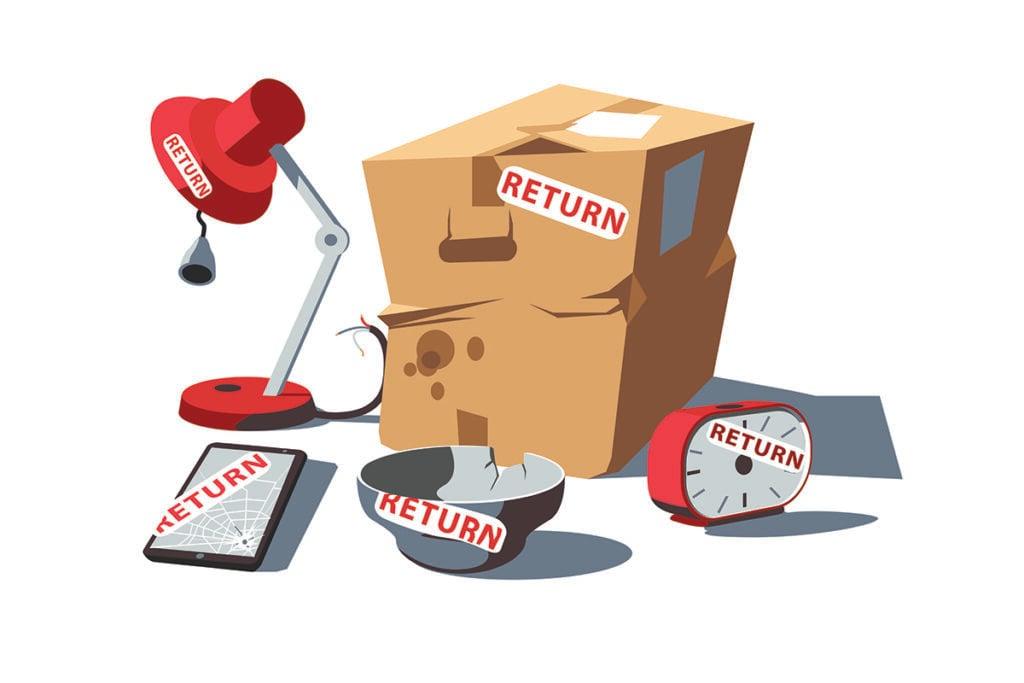In the intricate web of global commerce, the journey of a product does not end once it reaches the hands of the consumer. Instead, it often takes a return trip back into the supply chain through the complex process of return goods handling. This crucial aspect of logistics, transport, and shipping involves the careful management of products that are unwanted, defective, or in need of repair. Join us as we delve into the world of return goods handling and discover the challenges and innovations shaping this essential aspect of modern trade.
Challenges in Return Goods Handling
One of the major is the complexity of the process. Managing reverse logistics requires careful coordination and tracking of multiple moving parts, including return authorizations, shipping labels, restocking inventory, and processing refunds. This complexity can lead to errors, delays, and increased costs for businesses.
Another challenge is the high volume of returns that many companies face, especially in industries like retail and e-commerce. Handling a large number of returns efficiently requires streamlined processes, dedicated resources, and effective communication between various departments. Failure to manage return goods effectively can result in unhappy customers, lost revenue, and damage to a company’s reputation.

Improving Efficiency in Transport of Returned Items
Efficient handling of returned items is crucial for businesses looking to streamline their operations and minimize costs. One key aspect of improving efficiency in the transport of returned items is optimizing the logistics involved. By implementing strategic routing and scheduling practices, businesses can reduce transportation time and costs, ultimately improving overall efficiency.
Utilizing advanced tracking and inventory management systems can also help businesses better track and manage returned items in transit. This ensures that returned items are quickly processed and returned to inventory or the manufacturer, reducing delays and improving customer satisfaction. By investing in technology and implementing streamlined processes, businesses can enhance their return goods handling logistics and provide a seamless experience for both customers and stakeholders.

Optimizing Shipping Processes for Return Goods
When it comes to handling return goods in the shipping process, optimization is key to ensuring efficiency and customer satisfaction. By fine-tuning your logistics and transport methods, you can streamline operations and minimize costs associated with returns. One method to optimize shipping processes for return goods is by implementing a robust tracking system that allows for real-time monitoring of return shipments. This can help identify any bottlenecks or delays in the process, allowing for quick resolution and improved customer experience.
Another way to optimize return goods handling is by establishing clear and efficient communication channels with customers regarding the return process. Providing clear instructions on how to initiate a return, packaging requirements, and expected timelines can help minimize confusion and ensure smooth returns. Additionally, investing in technology solutions such as automated return labels and streamlined return management software can further enhance the efficiency of your shipping processes for return goods.

Maximizing Customer Satisfaction through Effective Logistics
When it comes to return goods handling, effective logistics play a crucial role in maximizing customer satisfaction. By streamlining the process of accepting and processing returns, businesses can create a positive experience for their customers, leading to increased loyalty and repeat business. One key aspect of return goods handling logistics is ensuring that the transportation of returned items is efficient and timely. Utilizing reliable shipping services and tracking mechanisms can help businesses accurately track the progress of returned items and provide customers with updates on the status of their returns.
Another important element of return goods handling logistics is the physical storage and organization of returned items. By implementing a well-structured system for storing and categorizing returned goods, businesses can quickly assess the condition of returned items and determine the appropriate course of action, whether it be restocking, refurbishing, or disposing of the items. Effective logistics in return goods handling not only benefits the customers by providing a seamless return process but also helps businesses optimize their operations and reduce costs associated with returns.
To Wrap It Up
In conclusion, effective return goods handling is crucial for businesses to maintain customer satisfaction and streamline operations. By implementing efficient logistics, transport, and shipping processes, companies can minimize costs and maximize productivity. With careful planning and attention to detail, businesses can turn the challenge of returns into an opportunity for growth. Stay tuned for more insights and tips on how to optimize your return goods handling strategy. Happy shipping!
